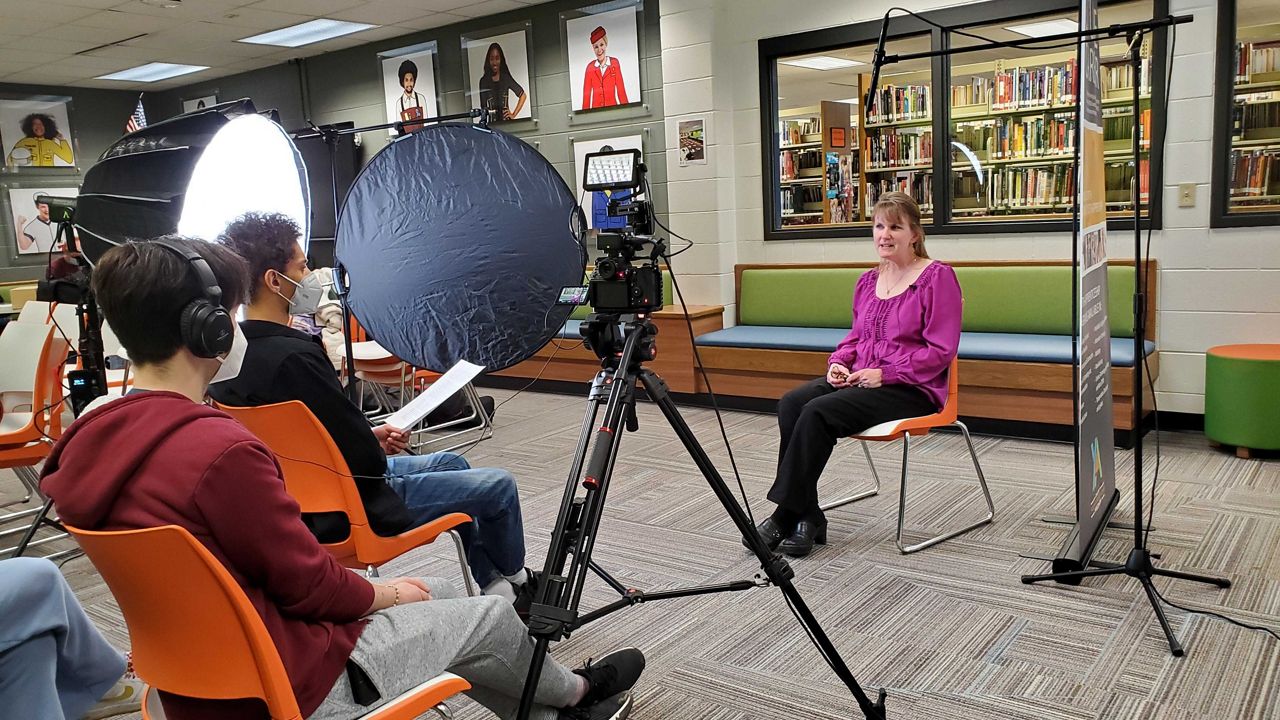APPLETON, Wis. — Adrian Sieck is not from here. And like a lot of residents of this city, his knowledge of its history was pretty much singular in nature.
“I know we had Harry Houdini, like that’s our claim to fame,” said Sieck, whose family moved here when he was five. “But (Houdini) left when he was like 13. So I feel like we should claim something else. But that’s kind of all I knew about Appleton; Harry Houdini used to live here.”
What You Need To Know
- Renaissance School for the Arts in Appleton served as the pilot school for PBS Wisconsin Education’s youth media project
- Students researched and produced three stories on their perspective about history in Appleton
- You can see an overview of the project, as well as the three videos produced by Renaissance students, here
Sieck’s knowledge and view of the place his family now calls home has changed significantly over the last year. Yes, it was kind of magical that PBS Wisconsin Education pulled Renaissance School for the Arts out of its hat for its “Wisconsin Hometown Stories: Youth Media” project.
Mostly, though, it was educational — on an entire array of fronts.
“Our work with Renaissance was our pilot project,” said Marci Glaus, Education Communications Manager for PBS Wisconsin Education. “Kind of an extension of “Hometown Stories” from PBS Wisconsin."
“So the goal for working with Renaissance and starting with one of the classes there was to get a student perspective about history in Appleton. What they thought about it, what they could learn about it and research about it. And then their perspective, as young people, what that means for their future.”
After a brainstorming session, the 12 students selected settled on three topics: mental health, political polarization and the ABC — A Better Chance — program.
Sieck was on the ABC team.
“It was a little daunting,” he said. “I had no idea what the ABC program was.”
The ABC program is a national nonprofit whose goal is to help young people of color who are identified as having academic talent but are in cities and situations where they are less likely to thrive.
So they come to a place like Appleton, which, back in 1968 when the program started here, had a dismal history with diversity.
Sieck and his classmates conducted research looking through archives at the History Museum at the Castle — operated by the Outagamie Country Historical Society — the Appleton Public Library and online research with the help of tips from PBS. They then had to find three interview subjects who could speak on the topic.
And it was an education.
Sieck relayed an account from one of their interview subjects about the beginnings of the ABC program.
“He told a story about how they went to this department store and the white people of Appleton, like, pointed at them and said, ‘Look at the n-word.’ That’s insane,” Sieck said. “You know, I get so used to like modern Midwest politeness."
“It’s hard to imagine people having been so blatant about it. Appleton was almost entirely white people, like 99.999% white people. That’s such an odd concept.”
But their research explained why that was. As late as the 1960s, Appleton was known as a “sundown town.” There were laws, real or implied, that prohibited black people from staying in the city after dark.
“It’s interesting because when you when you look at the real history of racism in your town, it’s like, I knew it, but also like, now I know it,” he said. “It becomes more real and tangible.”
But the start of the ABC program helped to bring change.
“The fact that this program, like the people of Appleton are, ‘Yes, we want this here. We want to bring people here.’ It’s a little bit heartwarming. So, yes, there are the laws and the racism going on here. But also there were people who were, ‘Let’s change this.’
“So it’s a dose of reality and then also a dose of, ‘Oh yes, the human spirit. This is good.’”
The education continued in the actual making of the media. From learning lighting, camera work and audio to the collaboration of discussing different ideas and opinions of how to put it together.
“I really thought it was interesting that (PBS) knew enough to let the kids do it,” said Michael Perkarske, an English teacher who helped oversee the project. “And they’d say often, ‘It’s your decision. We aren’t going to tell you this would be better. Or to use this. We’re here to help you figure out how you want to do something.’"
“But I think giving that power or that ability to students — ‘We’ll show you how to do this. But then it’s up to you’ — I thought that was good of the PBS people to do that.”
In the end, part of the students’ education was to be the educator.
“I don’t know how far back we consider history to be,” said Sieck, “but for those of us who weren’t around in the ’60s, it’s definitely, like, ‘I did not know that.’ Which I think was the whole point.”
Story idea? You can reach Mike Woods at 920-246-6321 or at: michael.t.woods1@charter.com



